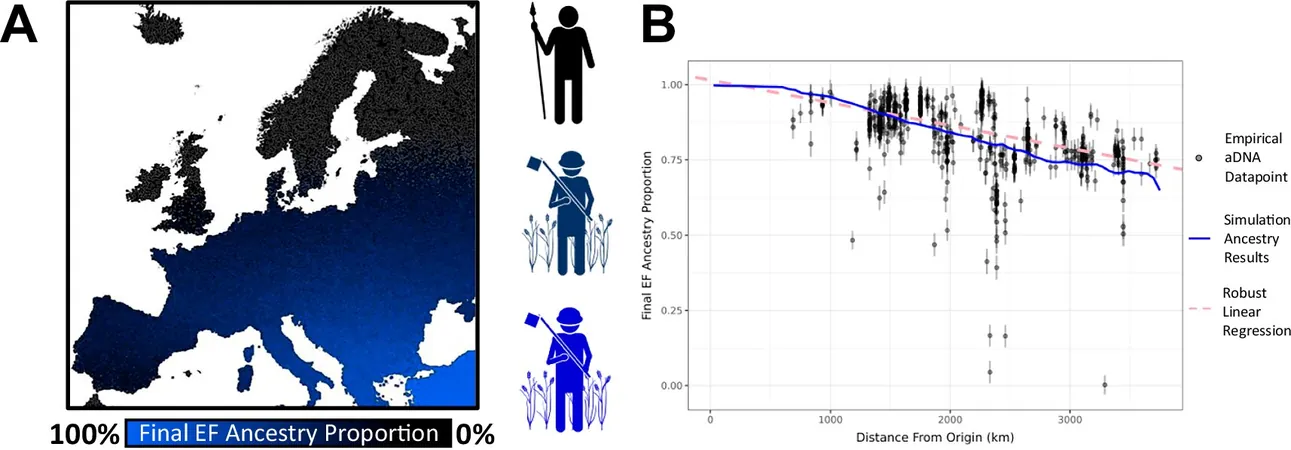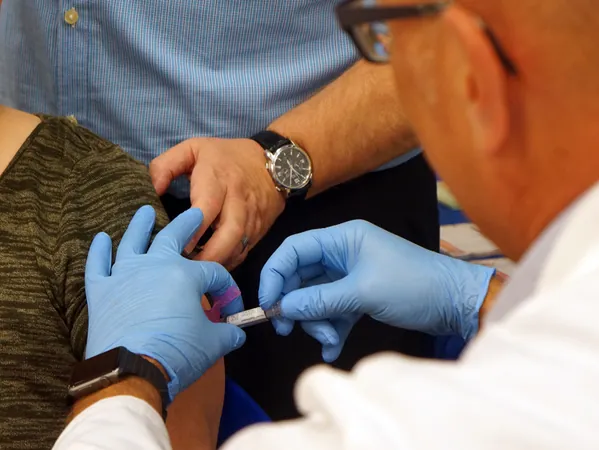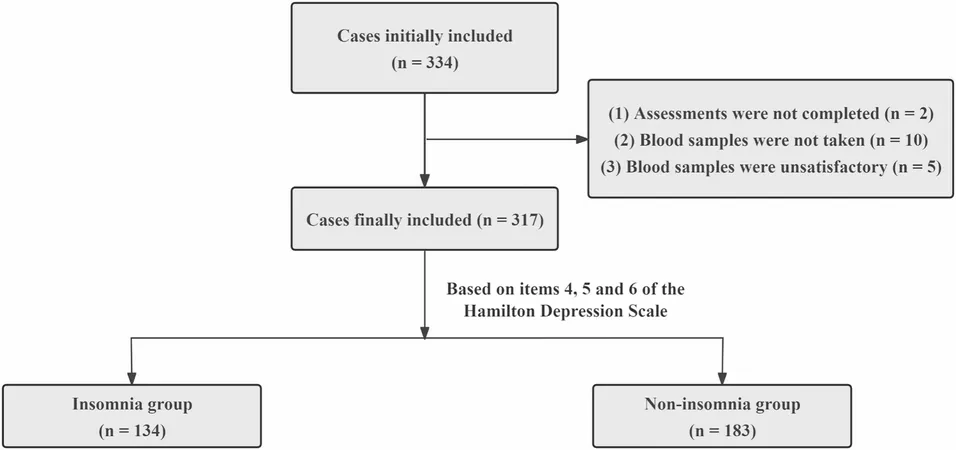
New Study Unveils Secrets of Farming's Spread: Migration Wins Over Cultural Adoption!
2025-08-27
Author: Emily
The Dawn of Agriculture: A Game Changer in Human History
Around 10,000 years ago, humanity underwent a monumental shift from mobile hunter-gatherer lifestyles to settled agricultural communities—a pivotal transition known as the Neolithic Revolution. This grassroots movement began in the lush Fertile Crescent of the Middle East and gradually transformed Europe, but what truly fueled this change has long been a hot topic among researchers.
The Migration Factor: The Greatest Influence on Farming's Expansion
A groundbreaking study from scientists at Penn State has finally shed light on this age-old debate. Leveraging advanced mathematical modeling, computer simulations, and ancient DNA analysis, the researchers uncovered key insights into how migration and cultural practices influenced the spread of agriculture.
Published recently in *Nature Communications*, their findings boldly assert that migration of farming communities was the primary driver of agricultural expansion, while the adoption of farming practices by local hunter-gatherers played a surprisingly minor role.
A Unique Approach: Merging Archaeology and Genetics
According to Christian Huber, a biology professor and senior author of the study, both archaeology and genetics serve as complementary lenses to understand this transformative period. For instance, ancient artifacts and isotopes from bones can provide evidence of new agricultural practices, while DNA analysis reveals the ancestral origins of these populations, illuminating their migratory paths into new territories.
Unraveling the Past: New Insights into Historical Reconstruction
Utilizing detailed models that simulate population movements and cultural exchanges, along with DNA data from 618 European Neolithic individuals, the team quantifies how significant each factor—migration versus cultural adoption—was in enhancing farming's reach.
Lead author Troy LaPolice remarked, "Disentangling the roles of migration and cultural adoption has fascinated archaeologists and anthropologists for decades. What surprised us was that, despite migration, local ancestry patterns often remained unchanged, yet farming dramatically influenced European genetic backgrounds."
Cultural Transmission: A Minimal Impact
Their research revealed that while farming expanded, many hunter-gatherers continued their traditional foraging practices, illustrating that cultural transmission of farming ideas had a minimal impact—estimated at a mere 0.5%. Huber clarified, "The rate at which hunter-gatherers integrated into farming communities was incredibly low—only about one in 1,000 farmers converted a hunter-gatherer annually. Thus, cultural diffusion barely sped up agriculture's spread, yet even this limited exchange left a profound imprint on European DNA, introducing beneficial genetic traits to farming populations."
Limited Interactions: Cultural Group Isolation
Additionally, the study found mating remained predominantly within cultural groups, with less than 3% of inter-group mating events. This aligns with other ancient DNA findings, suggesting minimal gene flow between coexisting hunter-gatherers and farmers, as highlighted by co-author Matthew Williams.
Conclusion: Reassessing Historical Narratives
Williams and Huber have also contributed to refining methodologies for studying ancestries in ancient populations, emphasizing the importance of careful application of research tools to accurately portray human migrations throughout history. As we delve deeper into our past, these insights not only fill gaps in our understanding but also reshape narratives about the origins of agriculture and its far-reaching effects today.









 Brasil (PT)
Brasil (PT)
 Canada (EN)
Canada (EN)
 Chile (ES)
Chile (ES)
 Česko (CS)
Česko (CS)
 대한민국 (KO)
대한민국 (KO)
 España (ES)
España (ES)
 France (FR)
France (FR)
 Hong Kong (EN)
Hong Kong (EN)
 Italia (IT)
Italia (IT)
 日本 (JA)
日本 (JA)
 Magyarország (HU)
Magyarország (HU)
 Norge (NO)
Norge (NO)
 Polska (PL)
Polska (PL)
 Schweiz (DE)
Schweiz (DE)
 Singapore (EN)
Singapore (EN)
 Sverige (SV)
Sverige (SV)
 Suomi (FI)
Suomi (FI)
 Türkiye (TR)
Türkiye (TR)
 الإمارات العربية المتحدة (AR)
الإمارات العربية المتحدة (AR)